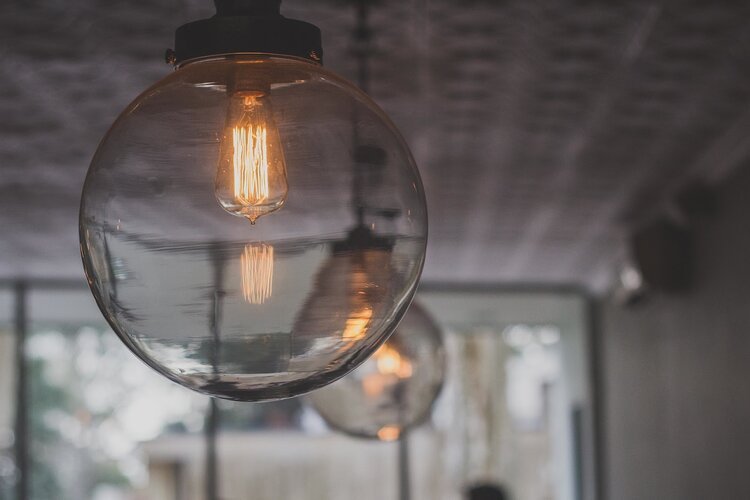DANGERS OF A CEILING LEAKING NEAR LIGHT FIXTURES
One part of the ceiling looks darker than the other. There’s a consistent drip coming from the roof of your home and onto the floors. It’s an inconvenience that you now have to get fixed, but it is also a source of risks that you want to be aware of so that you act quickly.
Ceiling leaks can already be a cause of stress and danger. They can cause ceiling and attic damage, the growth of dangerous molds and mildews, structural instability, and inefficient energy use that may result in higher utility bills. These risks can be amplified when ceiling leaks occur near light fixtures. Here’s what you need to know about the dangers of leaks around light fixtures, and what you can do to limit the risk.
WHY LEAKS HAPPEN
A ceiling leak is always a sign that another home system is damaged and leaking. Ceiling leaks occur generally as a result of a faulty patch on the roof or a plumbing leak that block and interrupt the natural flow of water laid out by the relevant home system. Water is really good at following the most simple path to flow through. When that path is disrupted, it begins to pool and causes puddles, soaking and subsequent leaking to occur. Blistered or peeling paint, discoloration, and dripping water are all signs of a leak that has already infiltrated your ceiling. You can identify the source, or at least estimate the source, by keeping an eye out for any patterns of the water leak.
If the water dripping from the leak is dirty or occurs most frequently when there is a storm or bad weather, this is likely a cause of a leak or hole in the roof. This kind of leak often causes soggy and dampened insulation, and can be solved by focusing on and fixing the structure of your roof. If the water dripping from the leak is clean and a generally consistent problem, there is a good chance this may be caused by a leaking water plumbing supply or fixture. This will warrant attention to the infrastructure of the plumbing of the home.
Water damage, however, can also be caused by the aging structure of the home. Simply, the structure may not be able to uphold certain weather or plumbing like it used to. If this is the case, some contracting work would be advised to solve your current structural problems as well as prevent future issues with the aging structure of your home.
THE RISKS OF A LEAK BY A LIGHTING FIXTURE
No matter the cause of the ceiling leak, there are dangers that happen as a result, and can be especially dangerous if the leak is by a lighting fixture in your home.
Electrocution and death are extremely dangerous and potential risks of operating a lighting fixture that is by a leak. These risks can be experienced from both touching or merely just operating the affected lighting fixture. This is because minerals and other contaminants that are found in the water causing the leak can transport electrical currents from the ceiling light fixture to the relevant wiring, the floor and other surfaces. This means that it is also important to stay away from these affected surfaces because of the electrical power they may be carrying.
While it may seem a bit ironic that a water leak can be a fire hazard, this is very much the case. Because leaks are not always obvious, and visible signs may take several days to appear, the water may take a toll on the electricity in your home in less obvious ways. Many indoor lighting fixtures are not designed for water exposure. As a result, electrical wires affected by or submerged in the water can develop dangerous molds or experience corrosion. These tolls on the electrical wiring can lead to electrical shorts or fires over time if they are used during or after a leak. Replacing them is the safest approach to avoiding the risks of any electrical wiring having been damaged by the water leak.
Ceiling collapse is also a very real risk of a ceiling leak in general, but especially near a lighting fixture. The lighting fixture can be weighing down an already sagging, wet, or bowed ceiling which puts that fixture at risk of falling and collapsing. This can be an extremely dangerous and unexpected result of a ceiling leak that is an added risk due to the weight and dangers of the fixture itself.
WHAT TO DO NEXT
If you find your home has a ceiling leak by a light fixture, you will want to take some necessary precautions to keep you and your household safe from any possible damages and dangers. If you choose to do these evaluations yourself, keep in mind that performing these steps should be done with caution and confidence so that the problem is appropriately addressed and can therefore, hopefully, be prevented in the future. If you do not want to do these steps alone, or want a second opinion, we are here to be of help to you to make sure you and your household are safe.
Firstly, be sure to turn the electricity off where the leak is located. To do this properly, turn off the electricity at the electricity breaker or panel in your home, rather than just the light switch controlling the single fixture. Directly turning off the electrical circuit will help protect you from the electrical failures in the affected and surrounding areas. You may need to contact your power company to do so if these switches are not available for you to directly control.
Once you have confidently turned off the power circuit, remove the fixture to the best of your ability to drain and soak up the water. There is a chance you may need to cut away some of the ceiling to make sure it is completely rid of water and water damage. If this is the case, we can help you out. We want to make sure you have a safe home with a sound structure and good lighting to live in. Be sure to replace the lighting fixtures after the area is cleared, or find new locations for the lighting in your home if you want to avoid any risks in the aftermath of a ceiling leak.
Fixing ceilings and light fixtures damaged from water leaks can be dangerous and tricky. Having professional electrician and contracting experts help you is an important step to making sure your ceiling leak is addressed properly. If you are experiencing leaks near any electrical equipment, feel free to contact us or set up a free consultation.




